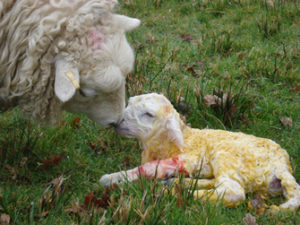Respect The Lambing Site
23 March 2018Approximately two days before lambing, biological changes occur in the ewe triggered by the foetal lamb. These cause the ewe to show specific behaviors which are important for lamb survival including, isolation and shelter-seeking and birth site choice. The birth site is important as the longer the ewe spends here with her lambs the stronger the bond that will form; her learning and experience of environment will influence her choice. The beginning of labour stimulates a change in ewe’s hormonal state and an attraction for amniotic fluids and birth site. When a ewe delivers her lamb, she releases oxytocin, this sends a message to switch her on to maternal behaviour. The presence of the lamb then lets her show maternal behaviour, this is also modified by genetics, age and experience. At birth the ewe is ready to form a bond with the lamb for 30-60 minutes by transferring attraction for amniotic fluids at the birth site to amniotic fluids in the lamb’s coat by licking the lamb. Lamb recognition by the ewe is mostly smell initially then visual and by sound (lamb bleats). Following this process, the ewe can identify which lamb is hers, other lambs are rejected. Sometimes this can go wrong. For example an inexperienced ewe, undernutrition in late pregnancy or a difficult birth.
The lamb plays a key role in the bonding process as well as the ewe. Presence of amniotic fluid on the coat, promotes maternal interest. They need sufficient activity and coordination to stand, seek the udder and suck. Sucking helps the lamb to learn to recognise the ewe and then maintain the bond.
Kirsten Williams, kirsten.williams@sac.co.uk
Sign up to the FAS newsletter
Receive updates on news, events and publications from Scotland’s Farm Advisory Service

